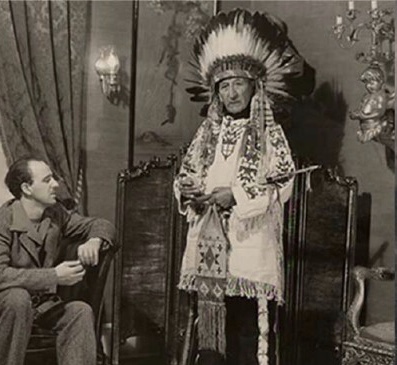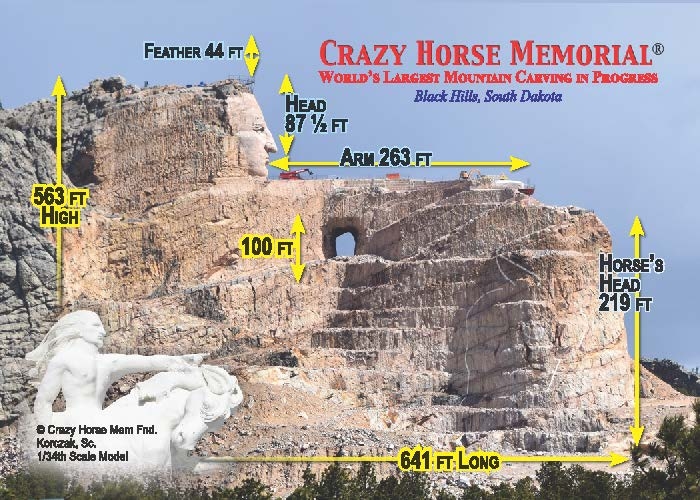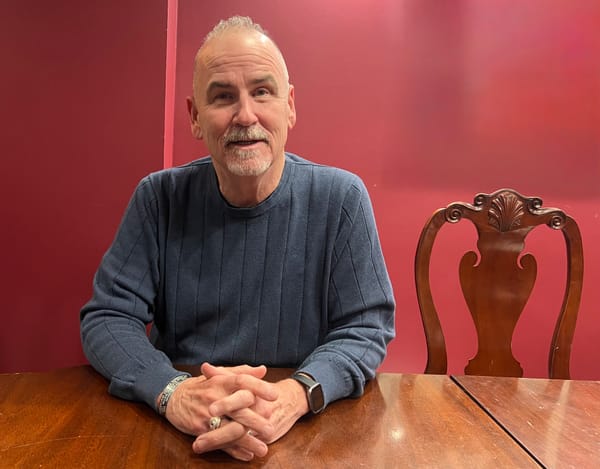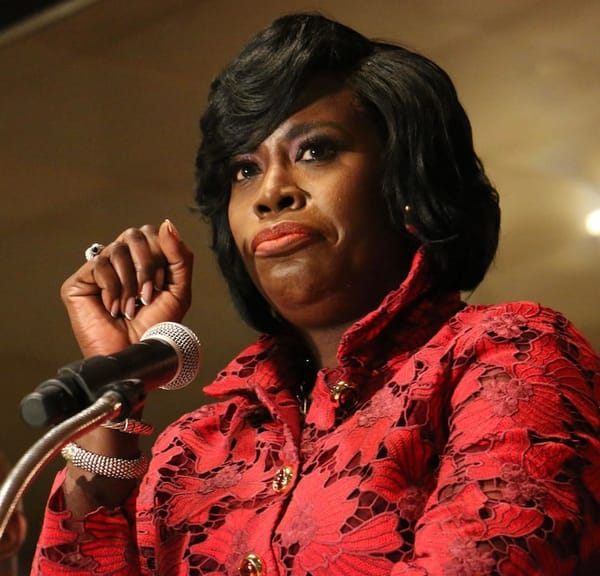Mt. Rushmore vs Crazy Horse
President Donald J. Trump’s visit to Mount Rushmore reignited complaints from Native Americans that the land was stolen from them, and the monument desecrated land they regard as holy. This is true, but irreversible. We are not going to destroy the monument as the Taliban did to huge Buddhas. A different kind of settlement is required.

A few miles away from George Washington, Thomas Jefferson, Abraham Lincoln, and Teddy Roosevelt is another historical figure emerging from a mountain, one that dwarfs the presidents. Started more than 70 years ago, it is the monument to the great warrior Crazy Horse, and his people. This story first appeared in the Philadelphia Daily News on Aug. 5, 1988. It appears here with minor edits and with the acknowledgement that I have been a supporter of the Crazy Horse Memorial since that time.
HILL CITY, S.D. — Some people dream in color. Some people dream in black and white.
Gutzon Borglum and Korczak Ziolkowski were giants who dreamed in stone.
Their dreams were monumental, and they are unfinished.
Here in the Black Hills, their masterpieces complement each other as they applaud different aspects of the American character.
First, it was the dream of Borglum, a first-generation American of Danish stock, to carve a tableau of American freedoms as big as the land itself.
"Each succeeding civilization forgets its predecessor, and out of its body builds its homes, its temples," he wrote. "Civilizations are ghouls . . . . "
He wanted to give his country "a few feet of stone that bears witness, carries the likenesses, the dates, a word or two of the great things we accomplished as a nation, placed so high it won't pay to pull down for lesser purposes.”
For his "few feet of stone" he took a mountain - and created the Mount Rushmore National Memorial.
It wasn't quick and it wasn't easy. There was even loud opposition from some local folks….
He started the job in 1927 at the age of 60 and it was not finished when he died at the age of 74. As a matter of fact, it is not completed today, at least not as the artist had envisioned it. Work stopped when the nation went to war in 1941, and never resumed.
Even if you haven't been here, it's easy to picture the monument in your mind's eye….
Many Americans got their first closeup view of the mammoth carving in Alfred Hitchcock's "North by Northwest. " Cary Grant was all over the monument.
Or so it seemed.
Those scenes actually were filmed using a special-effects model in a studio in Japan.
When you pull into the parking lot below the carving, it is a ways off and seems . . . small. Hold a quarter at arm's length and the coin head of George Washington appears larger than the one on the mountain….
Borglum's astonishing work is more impressive from the observation deck at the foot of the mountain. In the adjoining visitor center, you learn his plan was to carve not just heads, but torsos too.
To get the full impact of the size of his work, his skill - and the hardships he suffered - visit the Borglum Historical Center in nearby Keystone. The museum ($4.50 admission) has an actual-size replica of Lincoln's eye, samples of Borglum's other sculpture, plus equipment used for carving.
Most of the Rushmore work was done neither by chisel nor by drill, but by dynamite, using an ingenious technique devised by Borglum.

That dynamite technique was borrowed by Korczak Ziolkowski, a first-generation American of Polish descent, when he accepted an invitation from a group of North American Indians to carve a memorial to their people.
"My fellow chiefs and I would like the white man to know that the red man had great heroes, too," Chief Standing Bear wrote to Ziolkowski.
The first thing you have to understand about Ziolkowski is that he was one hard-headed cuss.
A self-taught artist (his bust of Polish pianist Ignace Paderewski won a first prize in the 1939 World's Fair), at age 34 he volunteered for military service and landed at Omaha Beach.
After the war, he came to the Black Hills to carve Crazy Horse - in the round - on Thunderhead Mountain, 17 miles from Mount Rushmore. Ziolkowski tackled the largest sculptural undertaking in history - a tableau dwarfing even the pyramids - completely alone.
When finished, the colossal work will depict the brilliant Oglala Lakota strategist on a pony, his arm extended, his hand pointing to Indian land. ("My lands are where my dead lie buried," a defeated Crazy Horse answered a sarcastic white man who asked where Indian lands could be found.)
The finished figure will stand 563 feet high - eight feet taller than the Washington Monument.
We think of America's Indian past as ancient history, but when a dynamite charge began the project on June 3, 1948, five of the nine Indian survivors of Custer's Last Stand, the Battle of the Little BigHorn, were standing there.
Ziolkowski was able to work only five months a year because of bad weather, limited funds and limited help. Money and volunteers were always in short supply.
Twice the federal government offered this hard-headed cuss $10 million to finance the work. Each time, mindful of how a distracted, post-War government failed to complete Mount Rushmore, he said no.
He mentioned another federal promise, the one that pledged the sacred Black Hills would belong to the Native Americans for "as long as the rivers run, as long as the grasses grow and the trees bear leaves.”
"Well, when I got ready to do this monument, the Indians didn't own the land," he said. "The federal government did and I had to trade the Interior Department a parcel I owned elsewhere to get this particular piece. "
He never took a salary. He fell off the mountain several times, broke his back, had a heart attack. "Sometimes I wish I could change," he said. "I'm a stubborn old bastard."
He married a volunteer, Ruth Ross, and they raised 10 kids, eight of whom still work on the monument. He built a home, a museum, operated a dairy farm and a sawmill to raise funds.
On Oct. 20, 1982, the hard-headed cuss died at 74 - the same age as Borglum. Standing on the observation deck, it takes a couple of minutes to understand what the monument someday will be. Working from detailed plans left by her husband, Ruth is in charge now and she realizes, as did he, that it may not be finished in her lifetime.
Which is not the important thing.
The important thing is that the work continues so that - someday - not only will Crazy Horse be complete, but also the Indian museum, university and medical training center for Indians at its base, all envisioned by Ziolkowski.
MOUNT RUSHMORE DATA
The faces vary from 60 to 70 feet in height.
Each eye is eight feet in diameter.
The faces are proportioned to a man 465 feet tall.
A total of 450,000 tons of rock was removed.
Gutzon Borglum was not only a supporter of Roosevelt, but he resembled him, too. Legend has it that the face of Roosevelt looks like Borglum.
Annual visitors: 2 million.
Cost of the project: $980,000.
Admission: free
CRAZY HORSE
All four Mount Rushmore heads would fit inside Crazy Horse's head.
The outstretched arm is 263 feet long on which 4,000 people could stand.
A 10-story building would fit beneath it.
When finished, the statue will be 563 feet high, 641 feet long.



